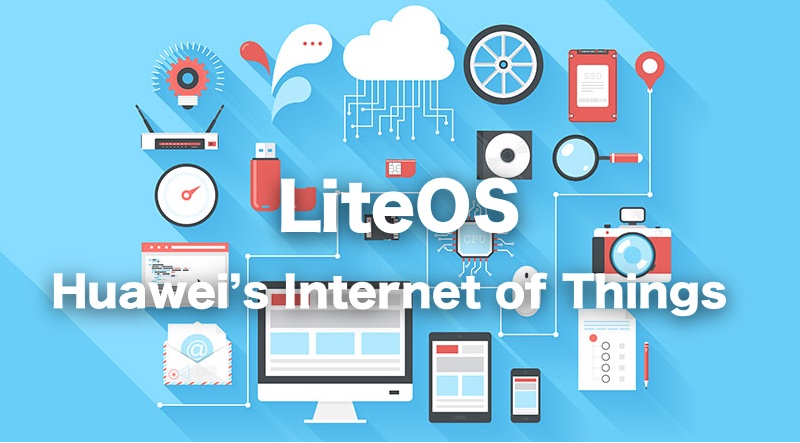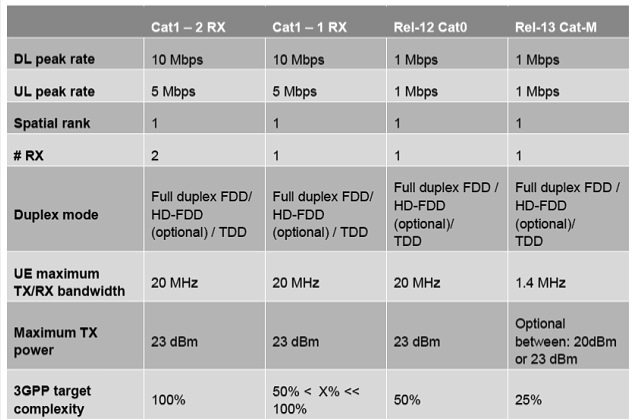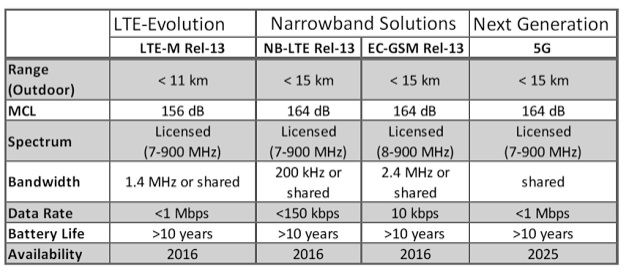
IoT technologies - Huawei NB-IoT, LTE-M, EC-GSM, Wi-Fi, ZigBee
NB-IoT stands for Narrow Band Internet of Thing, Huawei dominated NB-IoT technology has already become mature, is ready to be applied in commercial applications. Huawei NB-IoT module project moves smoothly, its highly integrated Boundica 120 chip is in mass production; while Boudica 150 chip (support 1800M) is under testing procedure, and expect to start mass production in Q4, 2017.
The international mobile communication organization 3GPP published the narrow band internet of things (NB-IoT) standard in June, 2016. After release of the standard, Hisilicon as the leading partner quickly launched NB-IoT chip, it’s the first NB-IoT chip in the world, low-cost, low power consumption and longer distance communication, Hisilicon NB-IoT chip can accelerate the adoption of IoT technology.
NB-IoT is an innovative new technology. It supports huge data connection, deeper coverage capability, low power consumption, all these advantages make it perfectly fit many IoT applications. Here we can list many applications such as smart meter, smart car parking, vehicle tracking, logistic monitoring, smart agriculture, wearable smart devices, smart home, smart community etc. The current 2G/3G/4G and other wireless communication technologies can not cater the needs from these areas.
Many people comparing NB-IoT with Wi-Fi, Bluetooth, Zigbee etc wireless technologies, however these technologies only can be applied to short distance communication, while NB-IoT is designed for purpose of long distance data communication. This means they can’t be compared or can not be replaced by each other. Multiple standard co-exists together is practical.
Advantages of NB-IoT
Huge connection: NB-IoT can support 50-100 times uplink data speed than 2G/3G/4G cellular network, by using the same cellular station, NB-IoT is able to cater 10-100 times number of wireless connection than other cellular technologies. For example, using existing wireless router, a home only can support maximum 5 online devices, then other smart IoT devices can not be connected. If deploying NB-IoT technology, it can connect at least 50 times number of connections, that’s 250 devices, can adequately meet the demands for smart home.
Extend coverage: NB-IoT signal gain is 20dB higher than LTE, it equals emitting power rate increases 100 times, means coverage capability improves 100 times, therefore wireless signal coverage can extend to underground car parking area, basement, tunnels etc locations.
Ultra low power: lower power consumption is one of most important criteria in IoT application, especially when system need to be installed in remote location and recharging or replacing the battery is not practical. The data speed determines device’s power consumption, lower data speed and bitrate, NB-IoT device can reduce power consumption. Besides, aiming to reduce power consumption, NB-IoT introduced DRX saving energy and PSM mode. NB-IoT can keep devices online, but eliminating unnecessary data and under PSM mode can ensure the battery can last up to 5 years.
Low-cost: low speed and low bandwidth brings low-cost benefits. Under low speed condition, the device just needs a small cache size, low performance DSP, low requirement on RF circuit design; as low bandwidth, balancing algorithm is not needed, the size of NB-IoT chip can be very small.
High reliability: NB-IoT can be deployed on GSM/UMTS/LTE cellular network, which means the NB-IoT solution can be achieved by utilizing existing cellular station to upgrade, but using unique 180KHz frequency band, doesn’t occupy existing voice and data frequency band, ensuring the communication for both conventional cellular service and future IoT service.
ZigBee Z-Wave Wi-Fi NB-IoT
Today's existing IoT technologies, mainly can be divided into two categories: one category like ZigBee, Wi-Fi, Bluetooth, Z-Wave etc short-distance communication technology; another category is LPWAN, Low-Power Wide-Area Network for long range communication.
Meanwhile, LPWA also can be divided in two groups: one group works in unauthorized radio frequency like LoRa, SigFox and more; another group works in autorized radio frequency, 3GPP supports 2/3/4G cellular communication technology, such as EC-GSM, LTE Cat-m, NB-IoT..etc.
Since emerging of different IoT technologies, 3GPP mainly has three standard: LTE-M, EC-GSM and NB-IoT, which is based or evolved from LTE, GSM, Clean Slate technology correspondingly.
LTE-M
LTE-M, stands for LTE-Machine-to-Machine, is a kind of IoT technology has evolved from LTE, it’s also refer as Low-Cost MTC in R12, or LTE enhanced MTC (eMTC) in R13, with aim to meet the IoT demands over existing LTE frequency.
Intending to cater needs of different IoT application scenarios, 3GPP has defined the minimize data speed of equipment is UE Cat-1 in R11, its uplink speed is 5Mbps, downlink speed is 10Mbps. In order to get adapted in lower power consumption and lower data speed needs, 3GPP has defined a new Cat-0 standard in R12, its uplink and downlink speed is 1Mbps.

EC-GSM
EC-GSM, extended coverage-GSM, as the emerging of different LPWA technologies, the conventional GPRS based IoT technology become less desirable. In “Cellular system support for ultra low complexity and low throughput internet of things” meeting in 2014, 3GPP GERAN made a proposal to migrate 200kHz narrow IoT technology to GSM, therefore can provide 20dB higher coverage than conventional GPRS, meanwhile made 5 main goals: improving performance of indoor coverage, support connection of mass devices, lower power consumption, reduce latency.

Since rapid development of technology, GSM IoT technology needs to be redefined, we call it “clean-slate” solution, means we clean the house before inviting guests, here comes with NB-IoT. As NB-IoT technology is not based on GSM, it’s merely a kind of clean-slate solution. NB-IoT is the combination of NB-CIoT and NB-LTE.
Get My Latest Posts
Subscribe to get the latest updates.
Your email address will never be shared with any 3rd party.